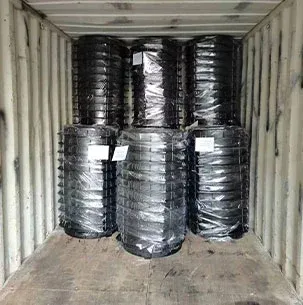metal to metal seated butterfly valves
Metal-to-Metal Seated Butterfly Valves An Overview
In the realm of fluid control systems, butterfly valves play a vital role in regulating flow. Among the various types of butterfly valves, metal-to-metal seated butterfly valves stand out for their robustness and reliability, particularly in challenging applications. This article will explore the characteristics, advantages, applications, and maintenance considerations of metal-to-metal seated butterfly valves.
What Are Metal-to-Metal Seated Butterfly Valves?
Metal-to-metal seated butterfly valves are designed with a metal seat that provides a sealing surface against a metal disc that rotates on a shaft. Unlike soft-seated valves, which use elastomeric materials for sealing, metal-to-metal seated valves offer enhanced durability and resistance to extreme temperatures and pressures. This design is particularly beneficial in environments where traditional soft seats may wear out quickly or fail under demanding conditions.
Characteristics and Features
1. Durability One of the primary advantages of metal-to-metal seated butterfly valves is their longevity. The metal seating surfaces allow these valves to withstand abrasive materials, high pressures, and elevated temperatures, making them suitable for a wide range of industrial applications.
2. High Temperature and Pressure Resistance Metal-to-metal seated valves can operate effectively in extreme conditions, typically up to 900°F (482°C) and pressure ratings exceeding 600 psi, depending on the design. This makes them ideal for applications in industries such as oil and gas, petrochemicals, and power generation.
3. Low Leakage Rates The metal-to-metal contact surface can create tight seals that minimize leakage, crucial for processes where maintaining fluid integrity is essential. This attribute also contributes to operational safety and environmental compliance.
4. Versatility These valves can handle a variety of media, including liquids, gases, and slurries. Their adaptability makes them suitable for many applications, from water treatment plants to chemical processing facilities.
Advantages
Metal-to-metal seated butterfly valves come with several advantages that make them a preferred choice in certain industries
- Cost-Effectiveness Although the initial investment for metal-to-metal seated valves may be higher than that of soft-seated valves, their longer lifespan and reduced maintenance requirements can lead to lower overall costs.
- Resilience in Harsh Environments These valves are less susceptible to damage from temperature fluctuations, pressure spikes, and corrosive substances. This resilience means less downtime and reduced repair costs.
- Minimal Maintenance Requirements With fewer parts and the durable nature of the materials used, metal-to-metal seated valves typically require less maintenance than traditional valve options, providing additional cost savings over time
.metal to metal seated butterfly valves

Applications
The robustness and reliability of metal-to-metal seated butterfly valves make them suitable for numerous applications, including but not limited to
- Oil and Gas Used in upstream and downstream processes for flow control and isolation. - Chemical Processing Ideal for transferring highly corrosive or high-temperature fluids.
- Power Generation Often employed in utility systems for regulating steam, water, and other essential media.
- Water Treatment Used in municipal and industrial water systems for flow control and isolation purposes.
Maintenance Considerations
While metal-to-metal seated butterfly valves are designed for longevity, routine maintenance is still essential to ensure optimal performance
1. Inspection Periodically inspect the valve for wear on the seating surfaces and disc. Any signs of erosion or damage may require corrective measures or replacement.
2. Lubrication Proper lubrication of the valve stem and actuator can minimize wear on moving parts and enhance operational efficiency.
3. Function Testing Regular operational checks ensure that the valve opens and closes smoothly and maintains its sealing capability.
4. Cleaning Remove any debris or build-up from the valve body and surrounding areas to prevent interference with the valve's operation.
Conclusion
Metal-to-metal seated butterfly valves are an indispensable component in various industrial applications. With their unmatched durability, high resistance to extreme conditions, low leakage rates, and minimal maintenance requirements, they offer an effective solution for fluid control challenges. Whether in the oil and gas sector, chemical processing, or water treatment, these valves continue to demonstrate their value across many industries. Proper installation and maintenance can ensure that these robust valves perform efficiently and reliably for years to come.
-
The Smarter Choice for Pedestrian AreasNewsJun.30,2025
-
The Gold Standard in Round Drain CoversNewsJun.30,2025
-
The Gold Standard in Manhole Cover SystemsNewsJun.30,2025
-
Superior Drainage Solutions with Premium Gully GratesNewsJun.30,2025
-
Superior Drainage Solutions for Global InfrastructureNewsJun.30,2025
-
Square Manhole Solutions for Modern InfrastructureNewsJun.30,2025
-
Premium Manhole Covers for Modern InfrastructureNewsJun.30,2025
